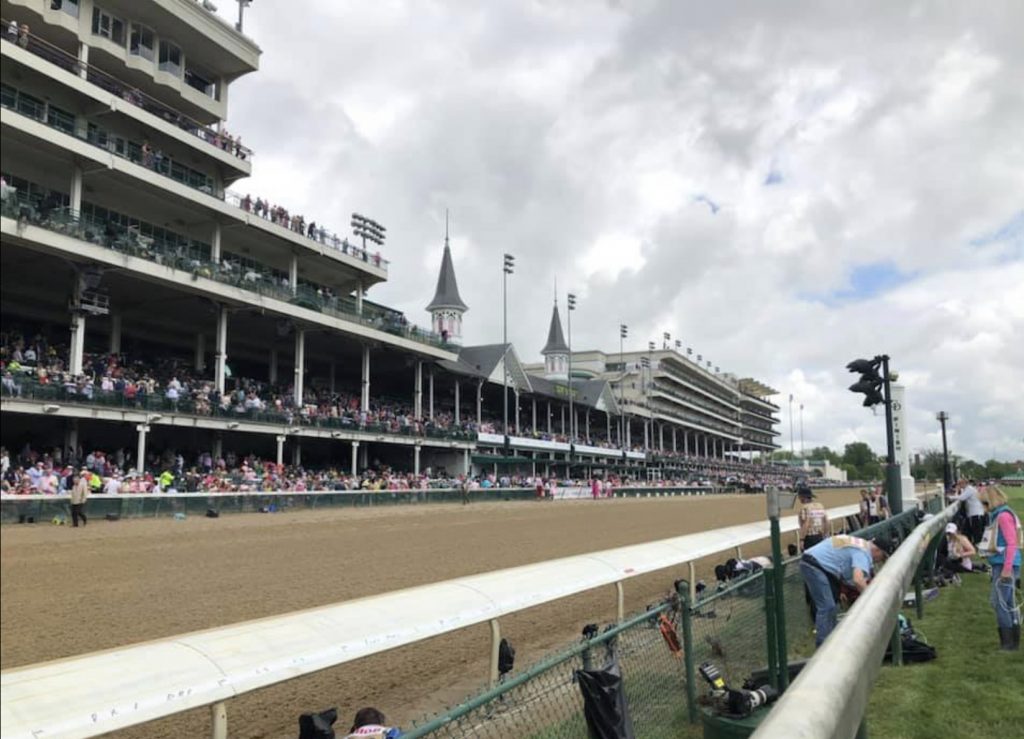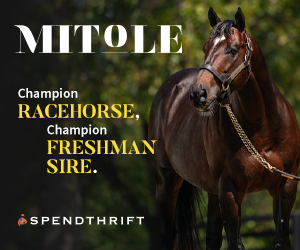
Peter Lee
Amid all the controversy surrounding Maximum Security’s disqualification in the Kentucky Derby, some were calling for a reduced field size from the current 20 to 14.
At first glance, it makes sense: when the gates fly open, all 20 horses begin working their strategy. The horses in the auxiliary gate angle over to get position, and it looks like an entrance ramp into a crowded freeway during rush hour – except the horses don’t slow down like the cars do. Despite how close we came to a mass accident in the May 4th Derby, many cross their fingers for the first 1/8 of a mile, hoping that no horses get slammed and take a fall.
There have been a few close calls. Trainer Mark Casse was the unfortunate victim twice in recent Derbies. In 2012, his horse Prospective was cut off by another horse, nearly unseating jockey Luis Contreras in the first 100 yards as the field of 20 maneuvered for position. He finished 18th. In 2017, Classic Empire, in the last position in the main gate, was slammed by the force of every horse in the auxiliary gate; it may have cost him the Derby. And of course, his horse War of Will was the recipient of a foul by Maximum Security in this year’s Derby.
Dan Wolken of USA Today recently called for a 14-horse field, which would eliminate the need for an auxiliary gate. “There are too many horses allowed in the Kentucky Derby, and the really catastrophic thing that could have happened when Maximum Security’s legs nearly tangled with War of Will’s nearly happens in just about every Derby,” he wrote. “The field is just so big, and there are only so many places on the track for jockeys to guide their horses to get a decent position. That means every year, someone has to check up violently to prevent a major collision that would result in multiple horses going down and potential loss of horse and human life. Frankly, Churchill is lucky it hasn’t happened yet.”
Trainer Ron Moquett, who had Far Right in the auxiliary gate in the 2015 Kentucky Derby, said he could “go either way” in regards to reducing the field. “I believe that it’s not conducive with trying to prove who the best horse is more as it’s who got the best trip,” he said. “I see plenty of reasons why the racetracks would like it large. The betting public may like it, a lot of options…I would say that if we are going to leave it at 20, and we have to understand that they need to be judged more severely more than more lackadaisical.”
Moquett noted that horse racing is always changing, from the way the horses get into the race to the breed itself. “We’ve tried to keep the tradition of running the race, and we’re going to try to hopefully put the horse’s well-being and health at the forefront of everything. As long as it’s a safe run race, then great.”
Mark Casse, in spite of the problems he’s had in the Derby, is all for a 20-horse field. He pointed out that in other countries, 20-horse fields are normal, but they have a 20-horse starting gate – no auxiliary gates. “We have so much room between the 14 and 15 [gates]. What happens is they all come roaring down and they push down, and then we have a collision in the middle of the track 100 yards out of the gate.”
Casse said the 20-horse field is what makes the Derby so popular, and if the race had been limited to 14, some Derby winners such as Mine That Bird, Giacomo and this year’s default winner, Country House, would not have made it into the field.
However, he did recommend two changes – a switch to the 20-horse gate with no auxiliary gate, and a rule that states that horses have to stay in their lane for the first 1/8 of a mile. “What would happen is that the horses that were going to drop back would take their positions; horses that were going to try to set off the pace, they would be somewhere, and there would be a lot better maneuvering.”
When asked about any possible changes to the gate or to the field, Churchill Downs officials refused to comment.
Always check with Past the Wire for the latest horse racing news…..



